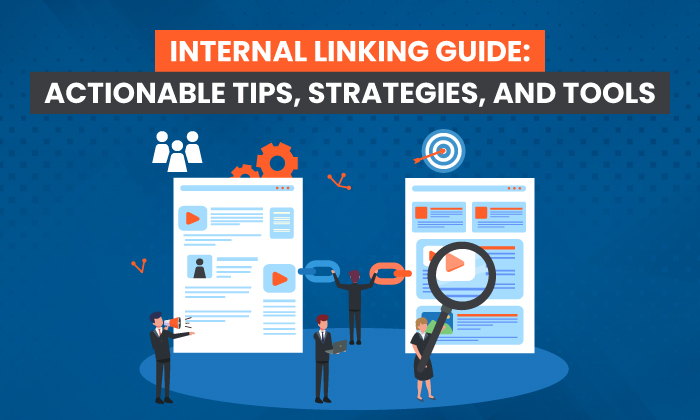
Internal links are a crucial part of a successful SEO strategy.
Small but mighty, simple yet complex, internal links help navigate users through your digital content and give search engine crawlers information about how your website works.
Internal links are found on almost every page on the internet. You’re probably already using them, even if you don’t know it. (Hint: there’s a few included in this intro,)
If you want to optimize your content for SEO, you need to understand how internal links work, where to place them, and why they matter.
In this post, we’ll dive into internal linking and cover best practices.
What Is Internal Linking?
Internal links are links from one page to another within a single domain.
These are different from external links, which point to pages on a different website.
Every website with more than one page should be connected through internal linking.
Think of your website’s home page. In the top navigation, you likely have a menu that links to other internal pages. This could be your About, Shop, and Contact pages.
This internal linking structure is essential for SEO because it establishes a site architecture and improves your link equity.
Having multiple web pages attached to a singular domain improves your chances of being ranked by allowing search engine crawlers to index more content.
Internal linking is a simple issue of site design and architecture, and the search engines expect it. All websites have a design and architecture that keeps them structured logically, such as this common silo model.

Of course, site architecture and structuring can get far more complex.
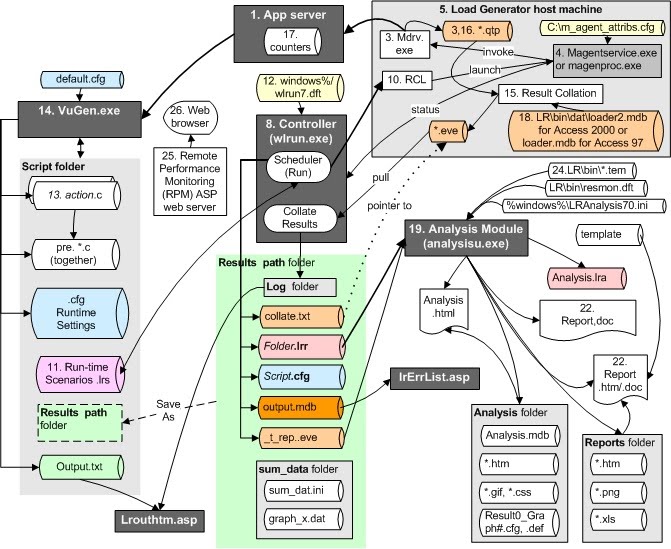
But as long as you have a strong internal linking structure, your website will be crawled, indexed, and ranked by search engines.
Internal linking is also an important part of your user experience, as it allows users to uncover related information or find what they are looking for, which improves dwell time.
5 Reasons Internal Linking Is Good for SEO
Internal linking is one of SEO’s most valuable weapons.
Why? Because it works.
Google’s machine-learning algorithm has come a long way since the early days of SEO. Nowadays, it’s nearly impossible to game the system.
As advanced as the algorithm is, there are still simple changes that will give you an immediate boost in SEO without gaming the search engines.
Internal linking is one of them. It’s not a trick or a gimmick, and it’s certainly not hard to do.
Here are some of the benefits.
1. Helps Google Index Your Site
Google’s crawler follows link paths throughout the internet to find and index websites.
If your website has strong internal linking, the Google crawler has an easier time finding new content you publish.
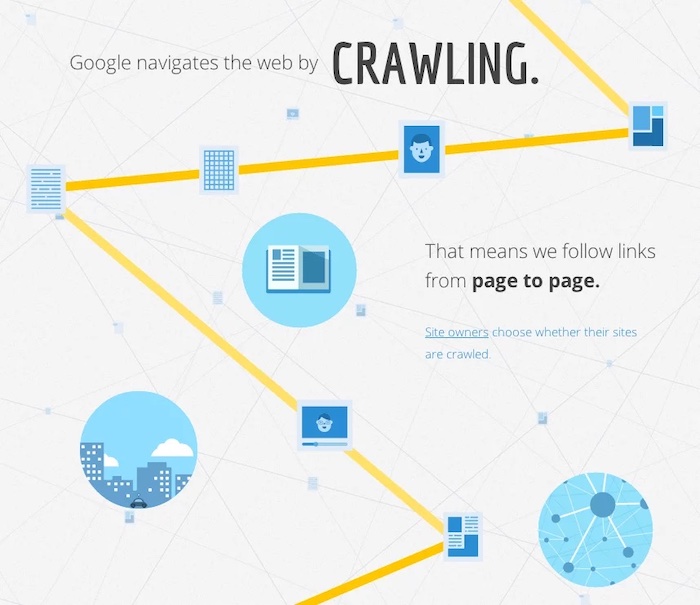
Google’s bots regularly crawl the web for fresh content. If your content is woven together with multiple internal links, crawling happens a lot faster.
As a result, your content will get indexed faster, too.
Improved crawling and indexing can boost your SEO.
2. Increases Backlink-Earning Potential of Deep Content Pages
Take a look at where most of your website’s backlinks are coming from. You’ll probably see a lot of links that send users to your homepage.
When you compare the homepage backlinks to deep page backlinks, this is what you usually see:
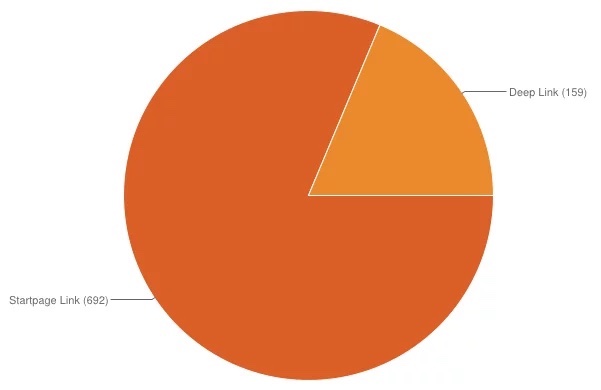
Unfortunately, too many home page backlinks are bad for SEO. We call this over-optimizing, and it should be avoided.
What you want to see is the pie chart reversed. The majority of your external links should point at deep internal pages, not your home page. That’s because the homepage doesn’t generally include the type of detailed information users search for.
When a website doesn’t actively publish and promote new content, its link profile looks like this:
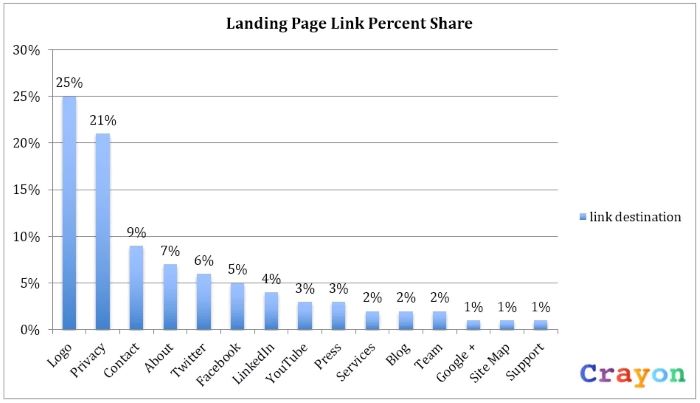
Most of the links on the website go to social profiles or standard pages such as “About” or “Contact.”
This provides very little SEO value to the site.
If you create a strong internal linking structure, you can boost the link juice earning potential of the internal pages, by creating clear click paths and indexation throughout the website.
Why? Because you are increasing the overall crawl priority throughout the site with better distribution of your links.
3. Internal Linking Spreads the Strength of the Site to Internal Pages
When your website receives a link to the homepage, some of the link value is passed on to internal pages.
This is often referred to as “link juice.”
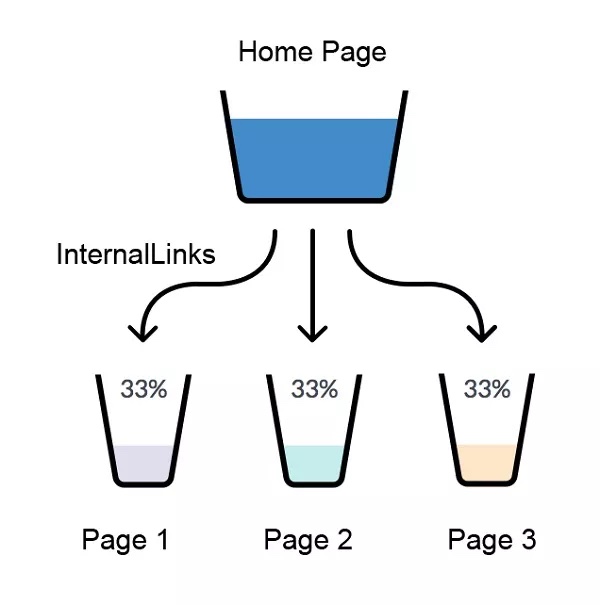
If Page 1 then links to Page 2, the “link juice” flows from Page 1 to Page 2, helping it rank higher in the search engine results page (SERP).
The more tightly-knit a website’s structure (through internal linking), the better the overall site will perform in search.
4. Internal Linking with Optimized Anchor Text Is Good for SEO
An internal link is a simple string of HTML that links one website page to another. It looks like this:
<A HREF = “http://www.example.com/internalpage“> an article on cat food </A>
When you create an internal link with anchor text, as opposed to with an image or navigational text, however, the value of the internal link goes up.
Anchor text improves the value of the link by adding keywords and content to the linking process. Google isn’t just looking at an A HREF tag. They are also looking at the anchor text that is part of that link.
The days of keyword stuffing anchor texts are long gone. But, there is value in optimizing your internal anchor text.
Anchor text that flows well with the overall content, versus over-optimized anchor text, is best.
5. It Provides Value to Your Users
This is the most important point of all. Internal linking is an SEO technique, yes. But, it’s more than that.
Ultimately, internal linking is useful for users.
Think about it this way: When you’re researching a topic, do you check one source or multiple?
Do you enjoy exploring other content that reinforces your understanding of the topic?
Maybe, you just like the writing style of the article you’re reading and want to read more work by the same author.
Internal linking on a site increases the value of each piece of content by backing up claims and leading the user to related information.
While it may not drive conversions directly, internal linking does have a place within the marketing funnel—carrying people to a target destination.
As an added bonus, you can help readers stay on your site longer and increase their trust in you by using internal linking.
SEO is about user optimization, not just technical tweaks and sneaky tricks.
Even if you don’t care about the technical value of internal linking, at least do it for your users.
Internal Linking Best Practices
Now, it’s time to get into the nitty-gritty. How do you do internal linking? What’s the best method for creating the biggest value with links?
There are two things you need in place first:
- Written content on the site: Even if you have a single article, that’s okay. That’s your starting place. If you don’t have any written content but want to create some, check out our The Ultimate Guide to Writing Epic Content.
- Continually writing new content for the site: Getting into a regular publishing schedule is important for internal linking to be effective.
Okay, let’s get into it.
Link to and From Content-Heavy Pages
The best internal links are those that connect one article to another. This creates a strong internal linking structure deep within the site.
If you have good site architecture, you’ll have enough links to the site’s main pages, such as the homepage, About page, Contact page, etc.
You don’t need more links to these pages.
Obviously, if you’re trying to drive conversions using a squeeze page or sales page and the opportunity is right, link to it.
For the most part, I recommend creating links in and among long-form articles. This automatically spreads your internal linking naturally.
Create Text Links Using Anchor Text
What kind of internal links work best?
It’s simple: Links with descriptive anchor text.
What do we mean by descriptive anchor text?
You’re familiar with anchor text, right? An anchor text is the word or words that link to another page. They typically appear as blue text to the reader.
Your internal links should use anchor text, but not just any anchor text will do. Include phrases that describe what the target link is about.
Here are some examples of strong anchor text:
If you wanted to link to an article about the 10 most important SEO techniques, you could do it this way:
Here are a few important SEO techniques you should be using.
If you wanted to link to an article about Google Hummingbird, you could do it this way:
Google’s algorithm has been updated with new machine learning capabilities.
Each of those examples is associating the subject of the link with relevant phrases. The first anchor text contains “10 most important SEO techniques,” which is the subject matter of the article you’re linking to. The second anchor text has the phrase, “Google’s algorithm has been updated,” and the linked article contains information about Google, Hummingbird, algorithms, and updates.
Here are three things not to do with your internal linking:
- Do not try to create an exact match between the anchor text and the link target. This technique, known as “exact match anchor text” has been associated with SEO penalties via the Penguin update. Today’s search engines are sensitive to the regular use of exact match anchor text because it wouldn’t frequently happen in regular content. It appears unnatural because it is.
- Do not use phrases like “click here.” This adds no value. Anchor text needs to be related to the linked page in some way.
- Do not link more than one sentence. An entire hyperlinked paragraph is unsightly and makes for a poor user experience. Just stick to a few words or a phrase when using anchor text to point to an internal link.
Add an Appropriate Number of Links Per Page
When you write a new piece of content, you should include five or more links to old articles. This is really important to your internal linking strategy and how the search engines review and rank your content.
Why?
Websites have a “freshness value” that Google detects and uses as part of its ranking algorithm.
According to Cyrus Shepard, “links from fresh sites [or pages] pass fresh value.”
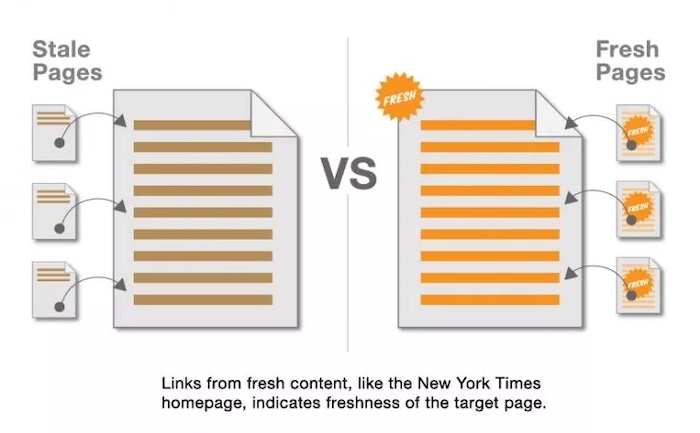
Pinging old pages with a new link helps to boost its likelihood of increasing rank in the SERPs. In the eyes of the search engines, readers who follow your internal links are actually “refreshing” your older content by showing it’s still relevant.
However, be careful not to over-stuff your content with links.
According to Moz, search engine crawlers have a limit of 150 links per page. After that, they stop spidering.
Overstuffing your page with links could negatively impact your SEO.
Be sure to link, but don’t overdo it. This will help both the search crawlers and your user experience.
Update Old Articles With New Internal Links
You’ll get the most power from internal linking if you combine it with another SEO technique—updating old content.
When you update old content, Google’s crawler sees it again, indexes it again, and may increase its ranking in the SERPs.
We always recommend updating your old articles regularly. Here is a good process to follow on your old blog articles:
- Add a new paragraph of content at the beginning, explaining your updates.
- Add several new paragraphs throughout, adding additional or updated information.
- Remove or replace outdated stats or information.
- Add several new internal links to content you’ve recently created.
- Add links in places where it’s logical and value-added.
Remember, internal linking isn’t only about linking new content to older content. It’s also about circling back to older content and creating internal links that connect to your newer work.
You’re accomplishing two things by doing this.
- It updates old content, which improves its ranking value.
- It creates an internal link between an old established page on the site and a new not-so-established page.
Add Links Where It Makes Sense
Now that you’ve learned so much about internal linking, you’re probably wondering where you should put your internal links?
It’s tempting to get lazy and throw them in at the end of an article: “For more awesome content, click here!”
Don’t do that, please. Or at least, don’t do just that.
Instead, look for areas in the content where the subject matter overlaps. These are logical points of connection to create an internal link. For example, you can add links to define complex terms or explain a related topic.
Think of internal links as a reference point that improves the experience of the reader.
Only Add Dofollow Links
Don’t add a nofollow tag to your internal links. Nofollow links do not have any impact on the search engine rankings of the destination site.
On top of that, Google does not transfer PageRank or anchor text across nofollow links. It won’t even crawl them.
While some data from Ahrefs has shown nofollow links can be useful when used externally, there is no reason to use them in your internal linking strategy.
Link to High Converting Pages
Do you have pages on your website that convert visitors more than other pages?
If so, link to these pages.
Some articles in our blog have super high conversion rates. The content is compelling, and the CTAs are so powerful that users convert in droves.
We always make sure to link internally to these pages.
This is where internal linking has more than just SEO value. It can have revenue value, too. The more visitors you can drive to a high-converting page, the more conversions you’ll have.
Take Site Navigation and Information Architecture Into Consideration
Site navigation and internal linking go hand in hand.
Internal links define site architecture and hierarchy by creating funnels that direct users through your website.
Ultimately, this is an important part of your UX/UI and will impact how long people stay on your web pages and how often they come back.
When building an internal linking strategy, consider the most important content on your site and how you’re promoting it.
If you have a piece of cornerstone content that you want more eyes on, point more internal links to it.
Create Lots of Content
The best way to have a healthy internal linking structure is to have lots of internal pages.
When you create lots of content, you’ll have lots of linkable content. The more links to the more places, the better your internal linking strategy will be.
Remember, simply having a lot of web pages doesn’t equal a robust internal linking strategy.
While internal links are essential to your website navigation, repeatedly linking to your homepage won’t move the needle on your SEO score.
Instead, consider writing a blog or creating landing pages that house resourceful content.
Whatever your strategy, do it well and do it often.
Internal Linking Practices to Avoid
Now that you know how to use internal linking correctly, let’s review some of the practices to avoid.
Adding too many links to your content can be detrimental to your score. Remember, Google does not crawl pages that have more than 150 links. It’s also important to note that your header, footer, and menu links are included in your on-page link count.
Don’t overdo it!
Keyword stuffing in anchor text is another internal linking practice to avoid. This black hat tactic was popular in the past, as SEO’s thought it would improve their chances of ranking.
These days, sophisticated search algorithms penalize keyword stuffing in anchor text. So, don’t do it.
Using internal links in header text should also be avoided. Links in headers signal spam to Google crawlers and can negatively impact your SEO.
Finally, be sure to check all of your internal links before posting them. Broken links don’t spread any link juice and signal to Google that your website is low quality.
Internal Linking FAQs
How many internal links should I include per post?
There’s no set number, but 5-10 for every 2,000 words is a good best practice. Remember, Google won’t crawl pages with more than ~150 links, so be careful about overstuffing your content.
Should I add internal links to my pages with more or less traffic?
According to Databox, internal links can spread link juice from low-traffic web pages to high-traffic ones. That being said, it’s also important to point as many links as possible to your cornerstone content so it benefits from increased traffic.
What is an example of internal linking?
Internal linking is a link that points to another page within the same domain. Internal links show up as hyperlinks, like this: Tips for building better evergreen links.
Are internal links backlinks?
No, internal links stay within your website domain, they do not come from an external source. Backlinks are external links that point to your domain.
Summary of Internal Linking Guide
Internal linking is a core part of a solid SEO strategy. When done right, it enhances the user experience and can help you rank higher in the SERPs.
While internal links are part of any strong website design, it’s important to find ways to include internal links in your content to ensure you’re getting the most out of your content. Make sure to use optimized (but not over-optimized) anchor tags, and add internal links that provide users with more information about a topic they’re interested in.
What internal linking practices have you found to be the most effective?
from Blog – Neil Patel https://ift.tt/3hId8sz
via IFTTT
No comments:
Post a Comment